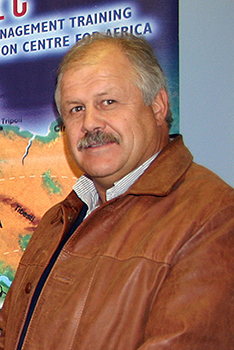
Dr Andries Jordaan
Photo: Supplied |
The Director of the Disaster Management Training and Education Centre (DiMTEC) at the University of the Free State, Dr Andries Jordaan, has been invited to serve on a UN special committee by the Secretary-General of the United Nations.
Dr Jordaan took part in the Expert Workshop on Climate Resilience in Geneva, Switzerland, on 22-23 June 2015.
In preparation for COP 21, which takes place later this year in Paris, the United Nations must draw up a situation report for a universal climate agreement between all the world’s nations. In order to advise the United Nations and the Secretary-General, and to prepare for the UN’s resilience initiative that will be launched during this important international gathering, a small team of approximately 20 experts and scientists from all over the world have been chosen to review the concept of the project. This group of experts will help to revise the original concept for the project.
According to Dr Jordaan, the Sectretary-General of the UN will be launching a ‘resilience initiative’ that is aimed at promoting resilience in climate-related risks.
Jordaan says it is an honour for him to represent the UFS and DiMTEC on such a specialist committee. “For me, it is recognition of the contribution we make in Africa and the world to disaster risk and climate adaptation,” he says.
DiMTEC is proud to be at the forefront of disaster management training in Africa. The centre has close ties with institutions of the United Nations, such as UNU-EHS, UNU-Flores UNOOSA, UNSPIDER, UNEASCO, UNEP, UNCCD, UNISDR and UNDP, among others.
DiMTEC strives to inform the public about disaster risk reduction through education. The centre’s master’s and post-graduate degrees in disaster management, as well as short courses and research, are of the highest standard.